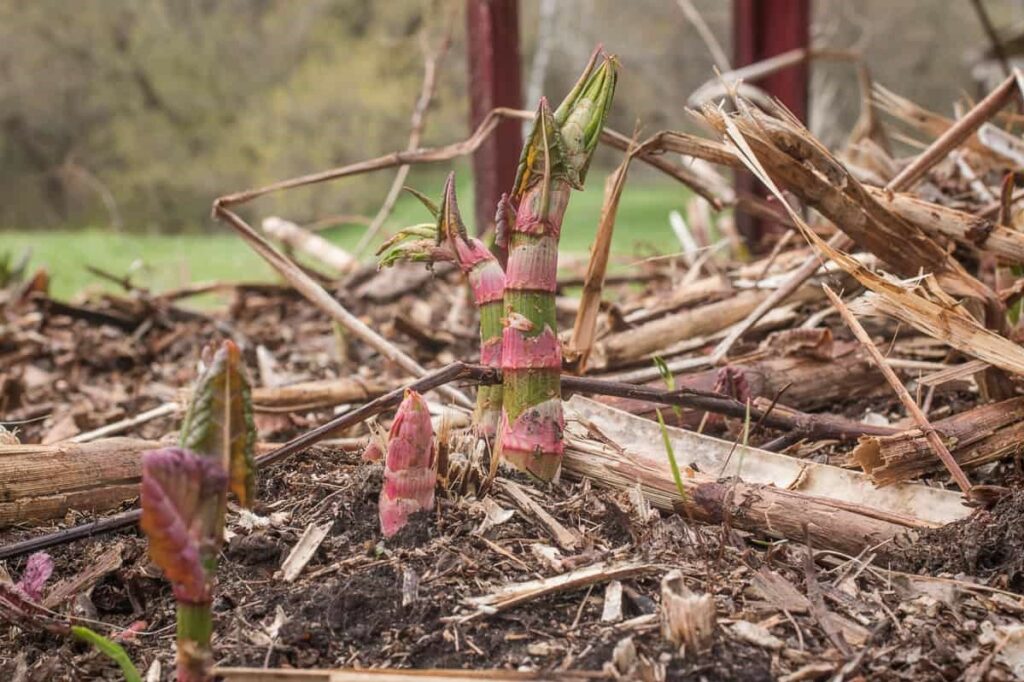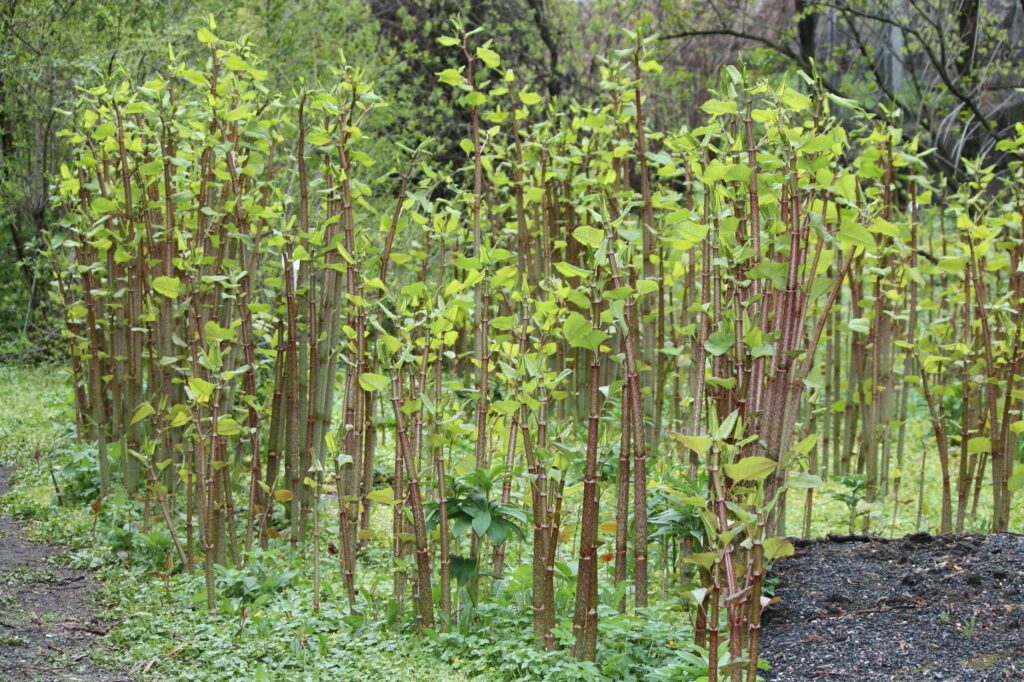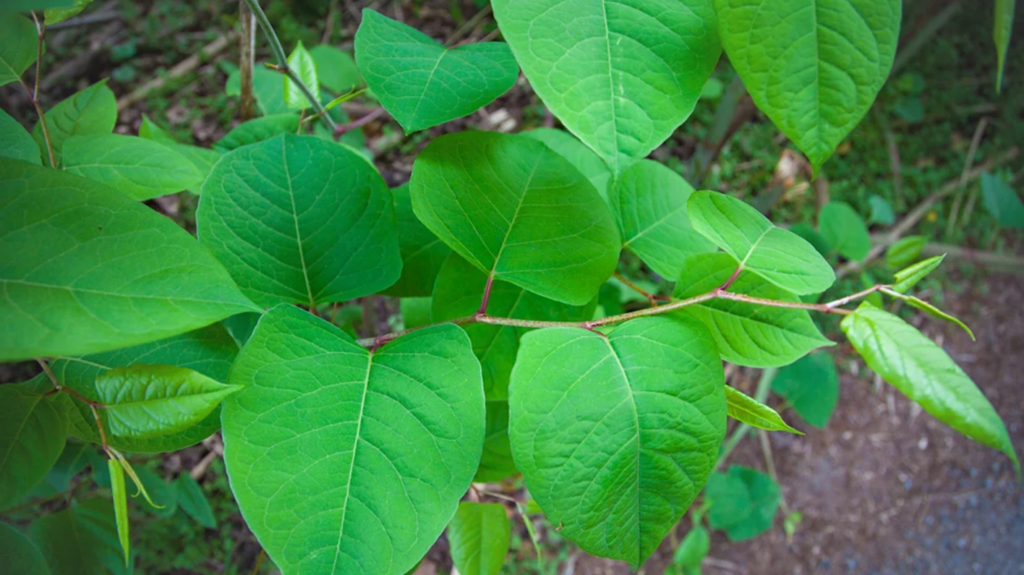Japanese knotweed (Fallopia japonica) is a highly invasive plant species that poses a significant threat to properties, native plant species, and ecosystems. Originally introduced as an ornamental plant from East Asia, it has rapidly spread across the globe, becoming a major environmental concern. In this comprehensive article, we will explore the characteristics of Japanese knotweed, its impacts, effective strategies for its management, and the importance of proper disposal of Japanese knotweed waste.
Overview of Japanese Knotweed
Japanese knotweed, also known as Polygonum cuspidatum and Reynoutria japonica, is a perennial plant that belongs to the buckwheat family (Polygonaceae). This invasive non-native plant can reach a height of up to 10 feet and forms dense colonies or thickets. The plant’s hollow stems resemble bamboo and display purple speckles. It produces heart-shaped leaves that alternate along the stem and small, white flowers in late summer.

Identification and Characteristics
Accurate identification of Japanese knotweed is essential for effective management. The plant’s leaves are broadly oval with a pointed tip and are usually covered with a whitish, waxy coating on the underside. The stems are hollow, similar to bamboo, and when cut, they reveal a distinctive orange-brown inner core. During late autumn and winter, the above-ground parts of the plant die back, leaving behind dry and brittle canes.
In addition to its physical characteristics, Japanese knotweed exhibits unique growth patterns throughout the year. In spring, reddish-purple shoots emerge from the ground and rapidly grow into tall stems with unfolding leaves. During the height of summer, the plant produces clusters of small, white flowers, adding to its visual impact. As autumn approaches, the leaves turn yellow, and the plant begins to wither, preparing for the dormant winter period.

Spread and Distribution
Japanese knotweed has spread extensively throughout the world due to its aggressive growth and reproductive abilities. It thrives in a wide range of habitats, including river banks, roadsides, gardens, and wastelands. The plant can tolerate various soil types and environmental conditions, allowing it to establish and proliferate rapidly.
The primary mode of Japanese knotweed’s spread is through human activities. Unintentional movement of contaminated soil, equipment, or plant material facilitates the dispersal of its rhizomes, which are underground stems, to new areas. Moreover, while Japanese knotweed can produce viable seeds, its reproductive success through seeds is limited compared to vegetative propagation. The dispersal of seeds primarily occurs through water, animals, or human transportation.
Japanese knotweed has been identified in numerous countries across Europe, North America, and Australia. Its distribution is particularly prevalent in regions with temperate climates, where it can outcompete and displace native plant species.
Ecological Impacts
The invasive nature of Japanese knotweed poses significant threats to native plant species and ecosystems. The plant outcompetes indigenous vegetation for resources such as sunlight, water, and nutrients, leading to a decline in biodiversity. Its rapid growth and dense thickets can shade out and suppress the growth of native plants, hindering their regeneration.
Furthermore, Japanese knotweed can have detrimental effects on soil chemistry and structure. The plant’s rhizomes penetrate deeply into the soil, disrupting natural soil layers and reducing soil stability. As a result, erosion becomes a concern, particularly in areas where Japanese knotweed grows near water bodies.
In terms of wildlife, Japanese knotweed provides limited habitat value compared to native plants. Its dense stands offer less food, shelter, and nesting opportunities for various animal species. In turn, the decline in native fauna can disrupt ecological balance and have cascading effects on higher trophic levels.

Damage to Property and Infrastructure
Japanese knotweed has the potential to cause significant damage to infrastructure, including buildings, roads, and drainage systems. Its extensive root system can exploit existing cracks and weaknesses, causing structural problems and reducing property values.
When Japanese knotweed grows in close proximity to buildings, its rhizomes can penetrate foundations, retaining walls, and drains, compromising their integrity. The plant’s aggressive growth can exert significant pressure on structures, leading to cracking, subsidence, and increased maintenance costs.
Furthermore, the presence of Japanese knotweed near watercourses poses risks of flooding. The plant’s dense stands impede water flow, increasing the likelihood of blockages and exacerbating the risk of flooding during heavy rainfall.
Methods of Control and Management
Controlling Japanese knotweed requires a comprehensive and integrated approach. Several methods have been employed to manage its spread effectively. These include prevention and early detection, chemical control, biological control, and mechanical control. Each method has its advantages and limitations, and a combination of approaches is often necessary for effective long-term management.
Prevention and Early Detection
Preventing the introduction and establishment of Japanese knotweed is crucial to mitigating its impact. Strict biosecurity measures should be implemented to avoid unintentional spread through contaminated soil, equipment, or plant material. These measures include thorough cleaning of machinery, using certified weed-free soil, and sourcing plants from reputable suppliers.
Early detection through regular monitoring and reporting of new infestations enables prompt action and minimises the extent of the problem. Training and awareness programs should be conducted to educate landowners, gardeners, and other relevant stakeholders about the importance of identifying and reporting Japanese knotweed.
Chemical Control
Chemical control methods involve the targeted application of herbicides to manage Japanese knotweed. Glyphosate-based herbicides are commonly used, either through foliar spray or injection into the plant’s stems. Professional expertise is essential to ensure the safe and effective use of herbicides, taking into account environmental considerations and legal regulations.
Timing is crucial when using herbicides for Japanese knotweed control. The application should be timed to coincide with the plant’s growth stage and when nutrient reserves are being translocated to the rhizomes. Repeat applications may be required over multiple years to deplete the plant’s energy stores and prevent regrowth.
Biological Control
Biological control methods involve the use of natural enemies, such as insects or fungi, to suppress the growth and spread of Japanese knotweed. Several biological control agents have been investigated, including the psyllid Aphalara itadori and the fungus Mycosphaerella leaf spot. However, their effectiveness and potential impacts on non-target species require careful evaluation before widespread implementation.
Biological control offers the advantage of targeted and sustainable management of Japanese knotweed. However, thorough risk assessments and strict regulatory frameworks are necessary to ensure that introduced biological control agents do not become invasive themselves.
Mechanical Control
Mechanical control methods physically remove or destroy the plant’s above-ground and underground parts. This can involve cutting, digging, or excavating the rhizomes (underground stems) and disposing of them in a controlled manner. Mechanical control is often labour-intensive and needs to be repeated over several years to deplete the plant’s energy reserves and prevent re-establishment.
Mechanical control methods can be effective in localised areas or small infestations. However, caution must be exercised to prevent unintentional spread of plant fragments during removal or disposal. Machinery and equipment used for mechanical control should be thoroughly cleaned to avoid dispersal to new sites.
Managing Japanese Knotweed in Residential Areas
Managing Japanese knotweed in residential areas requires a combination of approaches tailored to the specific circumstances. Homeowners should consult professional specialists who can assess the extent of the infestation and recommend appropriate control measures. This may include a combination of chemical treatments, mechanical removal, and ongoing monitoring to prevent regrowth.
Education and awareness among residents are crucial to preventing the unintentional spread of Japanese knotweed. Homeowners should be informed about the importance of proper disposal of plant material and the risks associated with DIY removal attempts. Early detection and reporting of new infestations can help prevent the establishment of Japanese knotweed in residential areas.
Legal and Regulatory Considerations
The control and management of Japanese knotweed are subject to legal and regulatory frameworks in different jurisdictions. It is essential to be aware of local laws and guidelines governing the treatment and disposal of Japanese knotweed waste. Failure to comply with these regulations may result in fines or other penalties.
In some regions, Japanese knotweed is classified as a “controlled plant” or “injurious weed.” This designation imposes legal obligations on landowners to prevent the spread of Japanese knotweed and take appropriate control measures. Engaging professional contractors who are knowledgeable about legal requirements is advisable to ensure compliance.
Public Awareness and Education
Raising public awareness about Japanese knotweed is crucial for its effective management. Educational campaigns can inform individuals about the plant’s identification, impacts, and proper reporting procedures. By involving communities, landowners, and relevant stakeholders, a collective effort can be made to prevent the spread and mitigate the negative effects of Japanese knotweed.
Public education programs should emphasise the importance of early detection, responsible disposal of plant material, and the potential risks associated with DIY control methods. By empowering individuals with knowledge, they can contribute to the overall management and prevention of Japanese knotweed in their local areas.
Case Studies
Numerous case studies provide insights into successful Japanese knotweed management strategies. These real-world examples highlight the importance of early intervention, collaboration between stakeholders, and a long-term commitment to control efforts. By studying these cases, valuable lessons can be learned to inform future management practices.
Case studies may focus on specific regions, such as urban environments, protected areas, or watercourse habitats. They can highlight the challenges faced, the approaches taken, and the outcomes achieved. Sharing these experiences can contribute to a better understanding of Japanese knotweed management and facilitate the development of effective strategies.
Conclusion
Japanese knotweed represents a significant ecological and economic threat globally. Its ability to spread rapidly, cause damage to infrastructure, and outcompete native species requires proactive management approaches. By combining prevention measures, early detection, and a range of control methods, it is possible to minimise the impact of Japanese knotweed and protect ecosystems and built environments.
The ongoing efforts of researchers, professionals, and communities are crucial in combating Japanese knotweed. By staying informed, adhering to legal requirements, and implementing appropriate control measures, we can work towards reducing the spread and impact of this persistent invasive plant.
Additional Resources
Sources and References
- “The Handbook of Knotweed: Resolving the Problem of Invasive Plants” by Andrew Leslie
- “Japanese Knotweed: Control and Management” by Max Wade
- “Japanese Knotweed and the Law” by Nigel Bowley

Faye is a valuable contributor at Glenlivet Wildlife, with a degree in Botany and expertise in plants and flowers. She has embarked on expeditions to remote areas, interviewing renowned botanists and biologists to provide unique insights into flora worldwide. Her favourite flower is the Jade Vine, admired for its beautiful colour and delicate appearance.

If you have Japanese knotweed on your property and you would like a site survey to determine which method of eradication or control is suitable and you live in Ireland feel free to contact Knotweed Control Ireland. We are based in Blackrock Co Dublin and cover all Ireland.